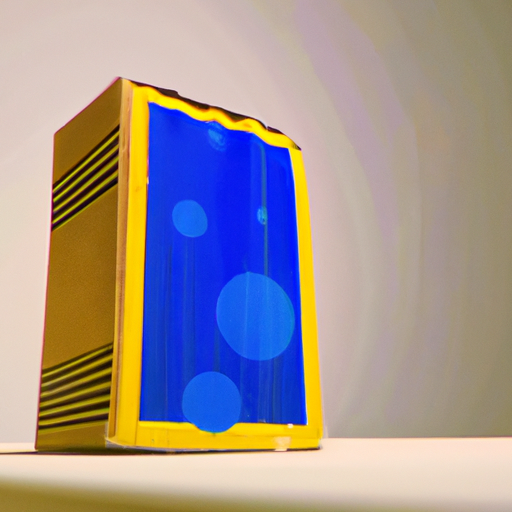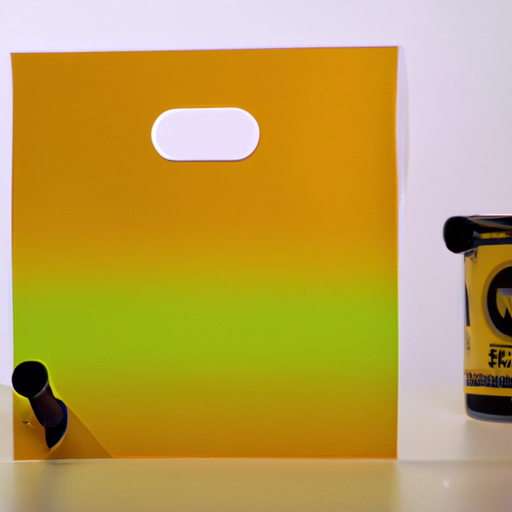
-
Table of Contents
Innovative Packaging Materials: Beyond Cardboard and Plastic

When it comes to packaging, cardboard and plastic have long been the go-to materials. However, as the world becomes more conscious of the environmental impact of these materials, there is a growing demand for innovative packaging solutions that are both sustainable and functional. In this article, we will explore some of the most exciting and promising alternatives to traditional packaging materials, and how they are revolutionizing the industry.
The Rise of Sustainable Packaging
In recent years, there has been a significant shift towards sustainable packaging solutions. Consumers are increasingly demanding products that are not only high-quality but also environmentally friendly. This has led to a surge in the development of innovative packaging materials that are biodegradable, compostable, and recyclable.
One such material is mushroom packaging. Made from agricultural waste and mycelium, the root structure of mushrooms, this packaging material is not only biodegradable but also has excellent insulation properties. It can be molded into any shape, making it suitable for a wide range of products. Companies like Ecovative and MycoWorks have already started using mushroom packaging for various applications, including protective packaging for electronics and even furniture.
Another exciting development in sustainable packaging is seaweed-based materials. Seaweed is a renewable resource that grows rapidly and requires no land, water, or fertilizers to cultivate. It can be used to create flexible films and coatings that are not only biodegradable but also have antimicrobial properties, making them ideal for food packaging. Companies like Notpla and Loliware are leading the way in seaweed-based packaging, offering alternatives to single-use plastic items like straws and cups.
Functional and Innovative Packaging Solutions
While sustainability is a crucial factor in packaging materials, functionality and innovation are equally important. Packaging needs to protect products during transportation, provide information to consumers, and enhance the overall user experience. Fortunately, there are several materials that meet these requirements while also being sustainable.
One such material is bioplastics. Unlike traditional plastics derived from fossil fuels, bioplastics are made from renewable resources such as corn, sugarcane, or algae. They have similar properties to conventional plastics but are biodegradable and compostable. Bioplastics can be used for a wide range of applications, including food packaging, bottles, and even 3D printing. Companies like NatureWorks and Braskem are at the forefront of bioplastics innovation, offering sustainable alternatives to traditional packaging materials.
Another innovative packaging solution is edible packaging. Edible films and coatings made from natural ingredients like starch, proteins, and lipids can be used to wrap food products, eliminating the need for additional packaging waste. For example, WikiFoods has developed an edible skin for fruits and vegetables that protects them during transportation and can be eaten along with the produce. This not only reduces packaging waste but also enhances the freshness and flavor of the food.
Case Studies: Success Stories in Innovative Packaging
Several companies have already embraced innovative packaging materials and are reaping the benefits. Let’s take a look at some success stories:
Loop: Reusable Packaging
Loop is a revolutionary initiative that aims to eliminate single-use packaging by offering reusable alternatives. The company partners with major brands like Procter & Gamble, Nestle, and Unilever to create durable and refillable containers for everyday products. Customers can order products online, and they are delivered in reusable packaging. Once the products are consumed, the empty containers are picked up, cleaned, and refilled. Loop has already gained traction in several countries, reducing packaging waste and providing a convenient and sustainable solution for consumers.
AirCarbon: Carbon-Negative Packaging
AirCarbon, developed by Newlight Technologies, is a packaging material made from greenhouse gas emissions. It captures methane, a potent greenhouse gas, from sources like landfills and converts it into a biodegradable plastic-like material. AirCarbon has a negative carbon footprint, meaning it sequesters more carbon than it emits during its production. Dell has partnered with Newlight Technologies to use AirCarbon for packaging its laptops, reducing the environmental impact of its products.
The Future of Packaging
The packaging industry is undergoing a significant transformation, driven by the need for sustainable and innovative solutions. As consumers become more conscious of their environmental footprint, the demand for eco-friendly packaging materials will continue to grow. This presents an opportunity for companies to invest in research and development to create new and exciting packaging materials.
Some areas of future development include:
- Nanotechnology: Nanomaterials have the potential to revolutionize packaging by providing enhanced barrier properties, antimicrobial coatings, and even smart packaging that can monitor product freshness.
- Biodegradable Plastics: Researchers are working on developing biodegradable plastics that can break down in various environments, including marine ecosystems, without leaving harmful residues.
- Recyclable Packaging: Improving the recyclability of packaging materials is crucial to reduce waste. Innovations in sorting and recycling technologies can help create a circular economy for packaging.
Conclusion
Innovative packaging materials are paving the way for a more sustainable and functional future. From mushroom packaging to edible films, these materials offer exciting alternatives to traditional cardboard and plastic. Companies like Loop and AirCarbon are already demonstrating the success of these materials in reducing packaging waste and carbon emissions.
As the demand for sustainable packaging continues to rise, it is essential for businesses to embrace these innovations and invest in research and development. By doing so, they can not only meet consumer expectations but also contribute to a greener and more environmentally conscious future.
